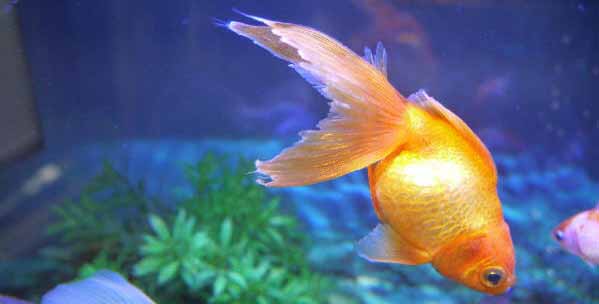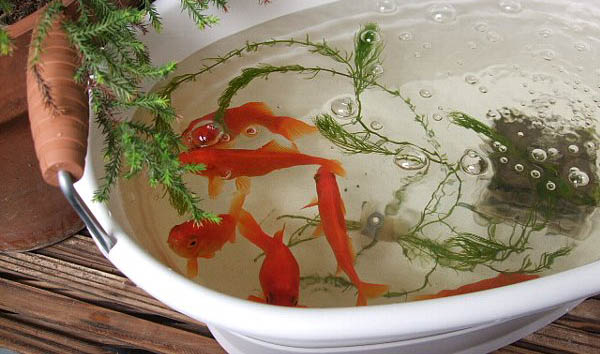disease
Table of Contents

Many people think that tail-feeding disease is a scary disease when they only hear the name of the disease, but in fact, it is not.This is a disease in which the tail fin gradually disappears.If left untreated, the tail fin will become progressively shorter and shorter and beyond repair, resulting in a short tailed goldfish that will eventually die from other diseases and other complications. Therefore, it is important to take action in the early stages to minimize the damage.
The cause of the tail fungus disease is the bacterium Flexibacter calamnaris, which belongs to the sliding fungus family that is also present in the aquarium.The disease is caused by a fungus called However, the presence of this fungus does not always cause infection. The causes of susceptibility to infection includeGoldfish can easily become infected when their fins, lips, and skin are damaged due to physical problems caused by excessive stress, such as deterioration of water quality or sudden changes in water temperature. The causative agent, Bacillus columnaris, can cause diseases such as mouth and gill louse disease as well as tail louse disease, depending on the site of infection. Also, old food can harbor the bacteria, so it is recommended to avoid feeding old food as much as possible. Other causes include deterioration of the water quality environment, so overcrowding and unsanitary conditions should be avoided.

The first initial symptom isThe tip of the tail fin turns white. Then, as the disease progresses, there may be a white thread-like substance on the tail fin.That white thread-like substance is part of the tail fin remnants that are removed when the tail fin is shortened by disease.

The terminal symptoms include gradualThe tail fin becomes ragged and the gap between the tail fin itself becomes wider.And the length of the tail fin itself becomes shorter. Then, the bacteria Flexibacter calamnaris is transferred not only to the tail fin but also to the rest of the body. The immunity of the goldfish itself will then be lost, and in the worst case, the goldfish may die.

The minimum that must be done to prevent tailing disease is to place the diseased goldfish in a separate container.The bacterium that causes tail wilt, Flexibacter calamnaris, is highly contagious, so if one goldfish has tail wilt disease, it can be passed on to other goldfish in the same container.So, add water that has had the calcium removed to another container and transfer the diseased goldfish. If most of the goldfish are sick, it is not necessary to transfer them.
Salt baths are one of the easiest ways to treat tailworm disease.To perform a salt bath, add 0.51 TP3T of salt to the water in the container containing the affected goldfish.To be honest, this is all I have to say. If possible, I would recommend giving salt baths to the tanks that contain goldfish that do not have the disease. If you can, I recommend that you treat the goldfish in the tanks that do not have the disease, as there may be goldfish that have not yet developed the disease but could develop it at any time.
If you want to cure the disease more quickly or more reliably than a salt bath, you should use a medicated bath. This is a method of treatment using a special medicine that is effective against the tailpipe disease. It is also possible to use salt baths and medicated baths at the same time. What medications are effective for tail fungus disease?Elverge Ace" and "Aguten."There are
Tailstock disease is,Goldfish can develop diseases by invading the body through wounds, so it is important to keep the water quality stable so that pathogens cannot enter the goldfish if they are injured.It is. This can be prevented to some extent by being careful about correct water changes and excessive feeding. It is also important not to keep goldfish excessively so that they do not bump into each other and injure each other.
When you purchase a new goldfish,Newly arrived goldfish are under a lot of stress because of the completely new environment in which they live. They are also prone to contracting tail-feeding disease. Therefore, we recommend that you keep your goldfish in another container, such as a bucket, for a week to 10 days to see how they are doing before keeping them with other goldfish.However, if you have purchased a new goldfish and plan to keep another goldfish soon, you can reduce the risk of tail wilt disease and other diseases by reducing the amount of pathogens by bathing the fish in salt.
The tail fins lost due to the tail-feeder disease are,If it is in the early stages, there is a possibility of cure, although it may take time, but if it is in the terminal stages, there is no possibility of cure.So, when you find a tail-feeder disease, you need to deal with it as soon as possible. And especially, "Ryukin-type" and "Dutch-type" goldfish, which have distinctive tail fins, need to be especially careful.